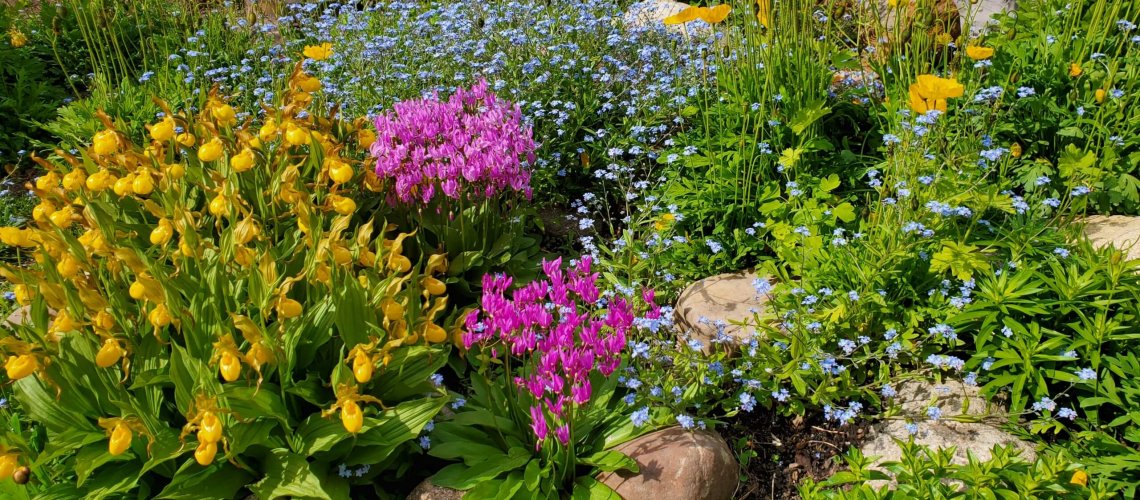While many gardeners buy pots and pots of annuals at the local market garden, others prefer perennials because of their variety and beauty year after year. I will talk about my favorites.
There are a few simple rules to follow.
- Start! A perennial garden evolves over a period of time. If you don’t like the location of a plant, you can dig it up and move it. In every article I read in garden magazines on beautiful perennial gardens, the gardener starts small and by a process of trial and error, his or her garden evolves into a place of beauty.
- Perennials thrive best in soil that is deep, well-drained, with lots of compost.
- Research each perennial and determine how large it will become and leave enough space for it to grow. Before the perennial reaches its final size, plant annuals in the bare dirt around the perennial.
- Research blooming times and locate your plants so that one or more perennials are blooming in each area throughout the gardening year. Some perennials bloom early, others late.
- Make sure the perennials you buy are for Zone 3.
Here are a few suggestions from my experience. There are many more perennials for our Zone 3.
Early Bloomers
- Poppies and Forget-Me-Nots sprout from last year’s seeds and will soon overwhelm your flower garden if you to not thin them quickly. However, they are among the first flowers to bloom. Bees love poppies.
- Elephant ears are large-leafed plants that grow anywhere. They spread, so you must continually confine them. A minimum space allocation should be at least three feet.
- Pasque flowers are one of the earliest bloomers. They come in red, white, and blue flowers. They can spread up to three feet.
- Lady Slipper, a native flower, produces yellow flowers shaped as lady’s slippers. Give it 24 inches of space.
Mid Summer Bloomers
- Coral Bells produce small red bell-shaped flowers that last and last. They are slow growers but need a space of 18 inches.
- Delphiniums are tall plants producing a variety of shades of blue flowers. They are susceptible to worms that eat flower and leaf buds. As soon as you see damage, spray with Bt or Spinosad.
- Fire Weed is a native plant that grows up to four feet tall, with a mass of small pink flowers that bees love. Provide three feet of space.
- Hostas come in many varieties and are known for their interesting leaves. They flower in midsummer. They take up an area of 2 to 3 feet.
- The flowers are short-lived but beautiful. As they tend to become overgrown, be prepared to divide them every three or four years, limiting them to a diameter of about two feet.
- Lilies come in many varieties and colors. The red lily beetle can completely destroy a clump of lilies. It can be controlled with Ambush sprayed on the bulbs as they just emerge in the spring. Spray every two days for up to 5 weeks. Provide up to two feet of space.
- Maltese Cross stands up to four feet, with small red flowers. Provide at least 18 inches of space.
- Ohio Buckeye produces a creamy white flower that lasts for a decent interval. While it looks somewhat like a bush, cut it down it down in the fall; it will grow up in the spring. It will need a space of up to three feet.
- Peonies produce beautiful, but short-lasting flowers, in many colors. They need a space of about three feet.
Late Summer Bloomers
- Cone Flowers come in a variety of colors with lasting blooms, occupying a space of up to 18 inches.
- Monkshood tolerates some shade and flowers late in the summer. It needs a space of at least 30 inches.
- Some native plants such as Goldenrod and Aster are fall bloomers.
These are many other perennial flowers that you can grow in a Zone 3 garden.

Recent Comments